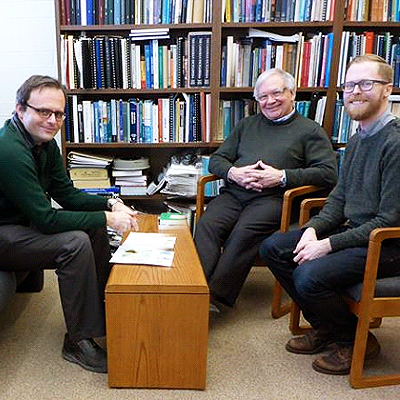When people think about climate change, they usually think about rising temperatures. But over the very long term, thousands of years in the future, the climate will eventually cool again, bringing with it the next ice age. That is why geoscientists will carefully consider the impact of past glaciers when assessing stability and safety of potential sites for Canada’s deep geological repository for used nuclear fuel.
To develop a better understanding of how the last ice age evolved, the NWMO has been working for the past 10 years with researchers in the University of Toronto’s Department of Physics. The current phase of research is headed by Drs. Dick Peltier and Gordan Stuhne.
"This work is important because glaciation represents one of the most severe changes that can occur in the Canadian landscape," notes Eric Sykes, an associate scientist at the NWMO. "In the past, large parts of Canada have been covered by ice sheets with a thickness in excess of four kilometres."
The goal is to use the university’s internationally recognized glacial systems model (GSM) to predict glacial ice sheet and permafrost history over the last 120,000 years. The predictions are tested by seeing whether they are consistent with observed geoscientific evidence from other sources.
"By using state-of-the-art GSM estimates of ice-sheet thickness and permafrost depth, we can better understand the likely impact of such conditions on the geology at potential repository depths," explains Mr. Sykes.

